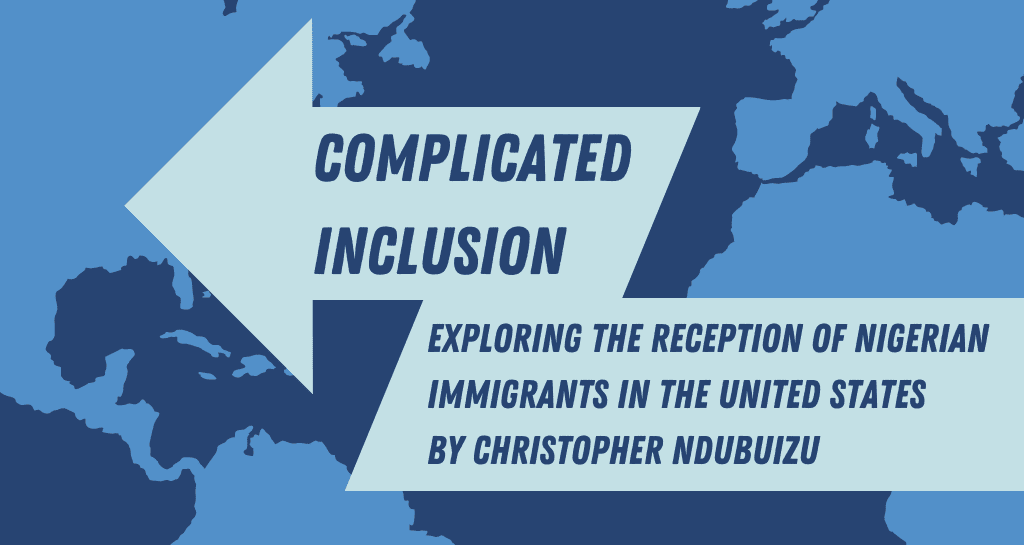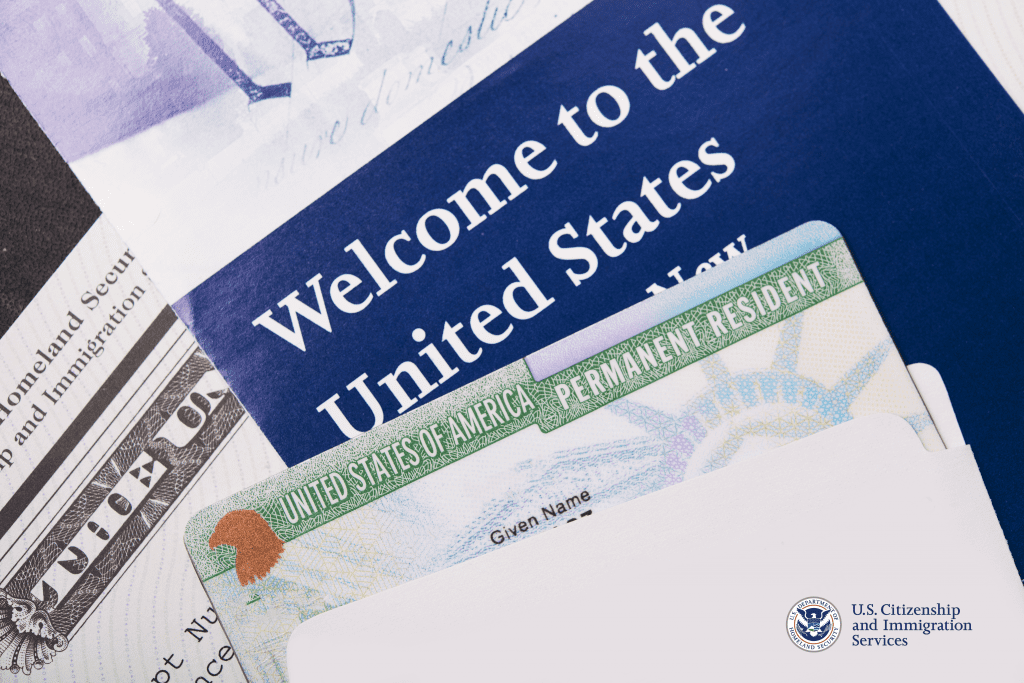
From 2017 to 2021, the United States witnessed a dramatic expansion of its immigration policy restrictions. Approximately fourteen countries were placed on what was popularly known as the Trump Travel Ban list (Executive Order 13780). The ban largely prevented nationals from countries such as Nigeria, Eritrea, Myanmar, and others from entering or obtaining legal permanent residency in the United States. The travel ban was one of many restrictive immigration policies the Trump administration implemented, with the supposed goal to “Make America Great Again.” The loaded slogan advocated for a return to earlier understandings of American nationalism which championed racial exclusion and cultural homogeneity—even though in many political circles, the United States refers to itself as a “Nation of Immigrants.”
Nigerian immigrants were arguably the most affected by the ban, considering that Nigerians represent the largest sub-Saharan African population in the United States, with over 70,000 residing in the state of Texas alone.[1] Despite this large population, Nigerian immigrants occupy a unique, and often difficult, position within the United States’ ethno-racial caste system. Since the passage of the 1965 Immigration and Nationality Act (Hart-Cellar Act), which prioritized the entry of highly-skilled educated immigrants, Nigerians have largely benefited from highly selective immigration policies. Consequently, Nigerians, much like educated Chinese and Indian migrants, are sometimes regarded as “model minorities” because their educational and professional attainments surpass that of many other racial and ethnic group including whites. [2]
Even as the Biden administration eliminated the Trump Travel Ban, immigration policies have continued to serve to maintain America’s ethno-racial hierarchy regardless of which federal administration is in power. The preference for highly-skilled, educated Nigerians and Black Africans overall does not make them immune from experiencing racial discrimination and anti-Black xenophobia.

The context of reception is defined by the ways in which immigrant groups are received and incorporated in the host society based on the policies of the receiving government, the character of the host labor market, and the features of their own ethnic communities.[3] The context of reception can be either positive or negative.[4] In a positive context of reception, immigrants are generally welcomed and have access to opportunities such as stable employment and supportive social networks.[5] In a negative context of reception, immigrants experience isolation, have difficulty finding jobs, and experience discrimination and perceived hostility.[6] Moreover, this framework acknowledges that not all immigrants are treated equally resulting in migrant groups reporting different levels of perceived feelings of acceptance and belonging.
For example, the context of reception among white Cubans and Black Haitians in South Florida is different. Scholars found that Cuban migrants reported a positive context of reception because of the “wet feet, dry feet policy” implemented by the Clinton administration, which guaranteed legal permanent residency to Cuban migrants after one year of living in the United States.[7] In contrast, Haitian migrants, most of whom are Black, reported experiencing a negative context of reception because of the United States government’s long-standing reluctance to grant Haitian migrants the same level of asylum or refugee status as Cuban migrants.[8] The differences in reception experienced by both migrant groups illustrate which migrant populations the host government deems worthy of benefiting from its laws and policies. Furthermore, the characteristics of each migrant group (characteristics like level of cultural capital, language proficiency, racial identity, and so on) play a significant role in the type of reception its members will receive in the host society.[9]
Blackness and Migration
While Nigerians who migrate to the United States are identified and/or categorized as Black, the preferences awarded to highly educated Nigerian immigrants as a result of post-1965 immigration policies places Nigerians in a unique position within the United States’ ethno-racial hierarchy. Both active governmental and employer recruitment of highly educated Nigerians to occupy educational and employment settings created a pathway for them to be regarded as “model minority” or a “Black model minority.”[10]
The model minority designation can, in theory, act as an example of a positive context of reception. The model minority concept is used to refer to a minority (typically a racial or ethnic group) whose members are seen as high achieving on measures such as education and income, while also reporting low rates of crime.[11] Additionally, some employers and university admissions counselors report viewing Black African immigrants as more disciplined and hard-working and thus deem them to be worthy of being granted additional opportunities.[12] Racist cultural explanations have been used to explain the outcomes of model minorities, but the outcomes of “successful” migrant groups actually rest on the economic, social, and cultural capital they bring with them when they migrate to the United States.[13]

Although Nigerians in many educational and occupational settings are viewed as a “model minority,” that does not prevent them from experiencing discrimination. Comparative studies that examine the experiences of migrant groups continue to illustrate how race plays a significant role in their integration in the United States. For second-generation Nigerians, many report experiencing perceived anti-Black discrimination such as racial profiling, feelings of isolation at work/school due to their country of origin, and having their intellectual abilities questioned.[14] These experiences differ widely from second-generation Armenians, who are categorized as white and report benefiting from the unearned advantages that come with being white.[15] As has been well documented, Blackness is falsely associated with imagined deficiencies or poverty, and since Nigerians migrants are categorized as Black, experiencing interpersonal and institutional discrimination becomes an unfortunate reality.[16] Therefore, Nigerians experience a combination of positive and negative contexts of reception. The preference for their highly-educated backgrounds presents a positive context of reception but their Blackness and the consequences that come with it, leaves them with a negative context of reception which make their positioning in America’s ethno-racial hierarchy unique.
Immigration
policy in the United States continues to be one of the most highly politicized
topics in the nation’s political landscape. The United States has a complex
relationship with immigration, simultaneously viewing immigration as a threat
to American national identity but an asset to America’s competitiveness in the
global economy. As migrant populations continue to grow and establish
communities and families all throughout the United States, especially in states
like Texas, we must consider how the reception of migrant communities can both
facilitate and complicate their incorporation into the United States. Exploring
the unique experiences of Black migrant groups will allow us to enhance our
understanding of racial inequality and should prompt scholars, organizers, and
policymakers to develop comprehensive policies that redress longstanding
inequality so that all populations can achieve an optimal quality of life.
[1] Oyebamiji, Sunday and Adekoye, Ambibola. “Nigerians’ Migration to the United States of
America.” Journal of African Foreign Affairs 6, no. 1 (2019): 165-180. (Accessed on Oct 3, 2021). www. jstor.org/stable/10.2307/26664092.
[2] Hsu, Madeline. The Good Immigrants: How the Yellow Peril became the Model Minority. Princeton: Princeton University Press, 2015.
[3] Portes, Alejandro and Rumbaut, Ruben. Immigrant America: A Portrait (4th Edition). Oakland: University of California Press, 2014.
[4] Seth J. Schwartz, Jennifer Unger, Elma Lorenzo-Blanco, Sabrina E. Des Rosiers, Juan A. Villamar,
Daniel W. Soto, Monica Pattarroyo, Lourdes Baezconde-Garbanati, and Jose Szapocznik, “Perceived Context of Reception among Recent Hispanic Immigrants: Conceptualization, Instrument Development, and Preliminary Validation,” Cultural Diversity & Ethnic Minority Psychology, 20no. 1 (2014):1–15, accessed on October 12, 2020, https://doi.org/10.1037/a0033391.
[5] Ibid.
[6] Ibid.
[7] Ibid.
[8] Ibid.
[9] Ibid.
[10] Greer, Christina. Black Ethnics: Race, Immigration, and the Pursuit of the American Dream. New York: Oxford University Press, 2013.
[11] Ibid.
[12] Ibid.
[13] Imoagene, Onoso. Beyond Expectations: Second-Generation Nigerians in the United States and Britain. Oakland: University of California Press.
[14] Ibid.
[15] Van Tran, V. C., Jennifer Lee, Oshin Khachikian, and Jess Lee, “Hyper-Selectivity, Racial Mobility, and the Remaking of Race,”. RSF: The Russell Sage Foundation Journal of the Social Sciences, 4 no. 5 (2018):188-209, accessed on March 11, 2021, https://www.jstor.org/stable/10.7758/rsf.2018.4.5.09.
[16] Hamilton, Tod. Immigration and the Remaking of Black America. New York: Russell Sage Foundation, 2019.
Photo credit: : https://www.pexels.com/photo/flight-landscape-vehicle-vintage-12686397/
The views and opinions expressed in this article or video are those of the individual author(s) or presenter(s) and do not necessarily reflect the policy or views of the editors at Not Even Past, the UT Department of History, the University of Texas at Austin, or the UT System Board of Regents. Not Even Past is an online public history magazine rather than a peer-reviewed academic journal. While we make efforts to ensure that factual information in articles was obtained from reliable sources, Not Even Past is not responsible for any errors or omissions.



